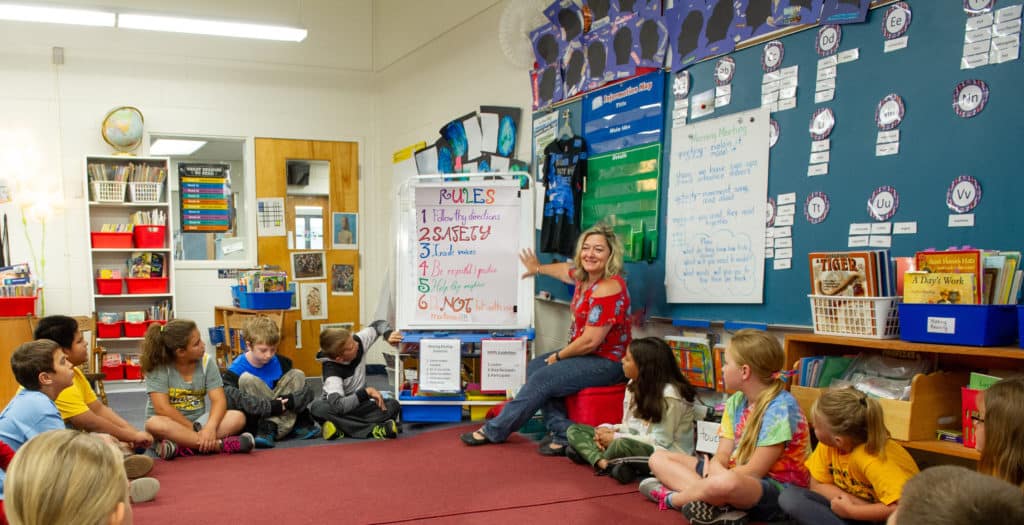
Several years ago, teachers at Ironia Elementary, a suburban New Jersey school with 600 students in kindergarten through fifth grade, began working with their students each September to create classroom rules—simple but powerful guidelines for behavior that set the stage for a productive year of learning. Once every teacher felt invested in the yearly rules creation process, bullying and other misbehaviors diminished and the school culture improved.
But it wasn’t enough. While it was important to have classroom rules that children were invested in, there were still areas outside the classroom that were getting overlooked. Ironia staff became concerned about behavior in these nonclassroom areas, including on the bus, on the playground, and in the lunchroom.
To address the problem, Ironia administrators looked for feedback from the school community—staff, students, and students’ families. At faculty meetings, team meetings, PTO meetings, class meetings, back-to-school nights, and any other school event; on the website; and in face-to-face conversations with staff, students, and parents, the administrative team asked what kind of school everyone wanted to work at and be in. The community reflected, envisioned, and answered.
After they’d reached a solid understanding of how they wanted their school to be (a process which took many months), Ironia administrators invited the school community to join in a process to develop whole-school rules that would mirror the rules-creation process they were using in the classrooms. The goal was to provide a set of common expectations and consistency throughout the school. This required buy-in from students, teachers, administrators, parents, and every adult who interacted with children in the school. With almost 600 students and a staff of 70, building broad ownership would be no easy task.
But they were up to the challenge. A little over a year later, Ironia had four powerful schoolwide rules that the community embraced, a more friendly school culture, fewer discipline problems, and a sense of pride in what they had created. Following are the highlights of their process.
Ironia’s powerful collaborative process yielded school rules that students, staff, and parents continue to embrace. Their journey to becoming a school that respects the voices of all is a spiral process is rooted in continuous improvement. They continue to revisit the rules often to ensure that they are embraced by all so they can become the school we want to be.
In Responsive School Discipline: Essentials for Elementary School Leaders, two experienced administrators offer practical strategies for creating a positive school climate, reducing problem behaviors, and building behavior management skills. Each chapter targets one key discipline issue and starts with a checklist of action steps. For comprehensive discipline reform, go through the chapters in order. For help with a particular challenge, go right to the chapter you need.
Mary Beth Forton is the coauthor of Rules in School and has helped create many other Responsive Classroom publications.